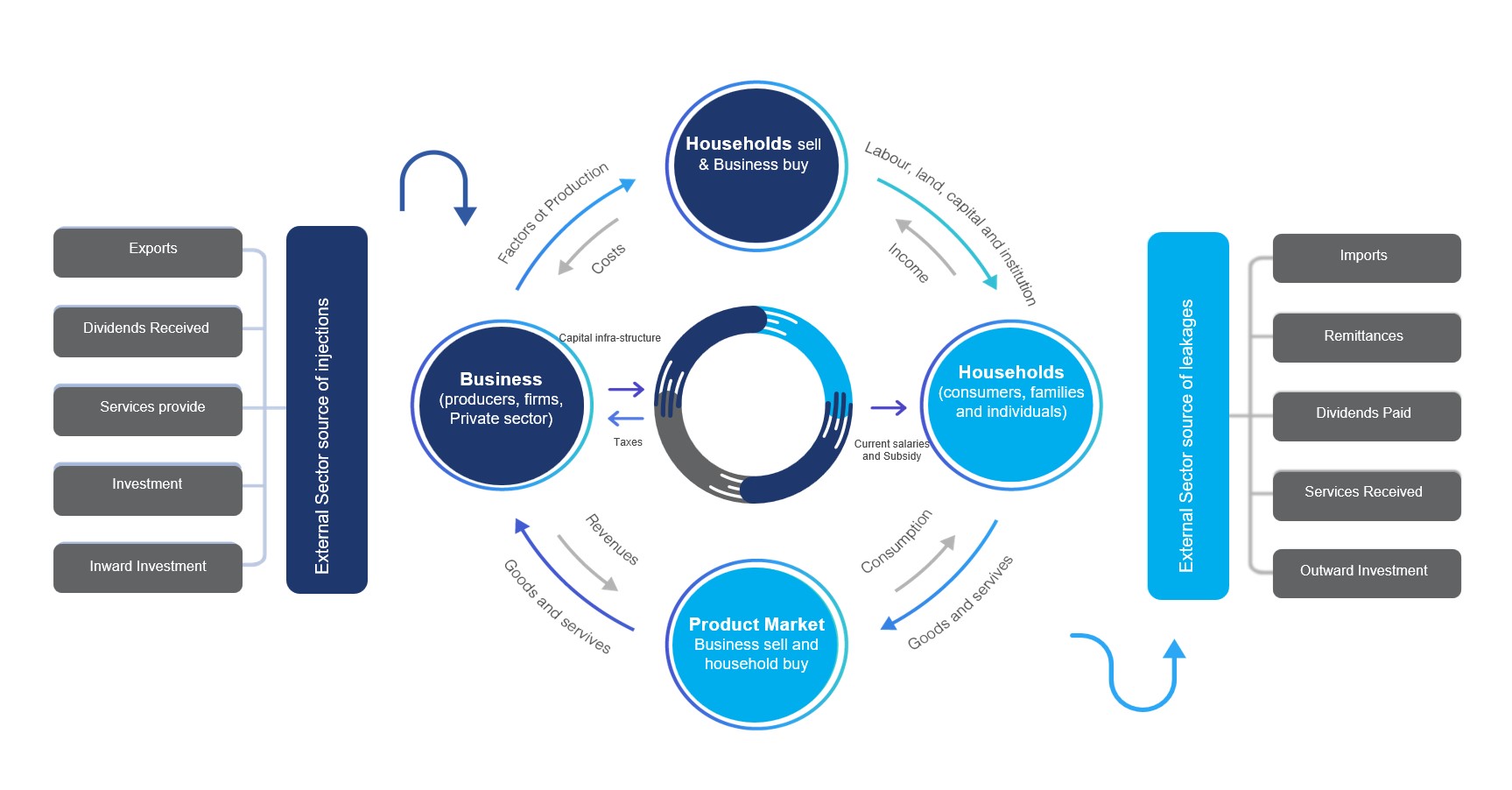Economic Diversification Brief
Key Terms
Economic diversification falls into two major types: economic (product) diversification and export diversification.
Economic diversification is generally defined as the process in which the economy becomes more diverse in terms of goods and services it produces.
The current policy debate about economic diversification centers around two competing strategies of industrialization: import substitution industrialization and export-led industrialization. The objective of import substitution industrialization is to promote domestic industries to replace foreign-made goods for domestic goods; while export-led industrialization intends to speed up the industrialization process by opening domestic markets for foreign competition and by supporting export sectors.

Export diversification refers to deliberate policies intended to change the commodity structure in the national export mix, by introducing new products in the export portfolio, and/or break into new geographical markets.
At the national level, economic diversification takes place by reducing a country’s overdependence on a narrow economic base. In resource-dependent countries, the process entails moving the production base away from the extractive sector by supporting manufacturing and other non-resource sectors.
Economic Diversification Indicators
Exports: Commodity structure of national exports.

Employment: Employment distribution across sectors of the economy.

Diversification Facts
Economic diversification is vital to long-term economic growth.
Key Reasons for Slow Progression of Economic Diversification
First: Lack of identifying and deploying appropriate policies and inconsistency of policy instruments to stimulate structural change during different stage of the development.

Second, Business cycles is not focus on industrial policies to boost diversification and local production. Excessive dependence on one direction of revenue that derived from oil and gas, and extreme dependence on import of all goods and services needed to fulfil the local demand.

Third, the political economy and selective nature of state-business relations: the government getting the hydrocarbon revenues which give the upper hands and the privilege of setting the stage and set the national priority from government perspective.
State
Absorptive capacity
Revenue
Infrastructures

Business
Environment
Productivity
Standard of living
Entrepreneurship
Society
Demands
Tax
Jobs
Investments
Key Policy Recommendations
Improving Infrastructure, industrial infrastructure and the quality of institutions
Promoting investment and trade freedom
Creating specific investment maps that target diversification and enhanced economic activity.
Encouraging real private sector development
Encouraging innovation and upgrading the skills of human resources and labor market reforms.
Introducing reforms to create a more competitive environment around state-owned enterprises.
Enhancing a competitive economic sectors and greater regional.
Encouraging PPP projects as an alternative approach for government financed development and core infrastructure projects.
Working with youth and women on entrepreneurship skills.
Expand studies and research on successful stories as well as best practices to similar economies.









